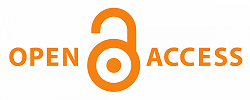COMPARISON OF BLOOD GLUCOSE LEVELS OF PATIENTS WITH DIABETES MELLITUS ON UNPRESSED FINGERS AND GETTED TO THE TELAGA BIRU MEDICAL CENTER GORONTALO DISTRICT
Abstract
Abstract
Examination of blood glucose levels using the POCT method using capillary blood helps diabetes mellitus patients monitor glucose levels. But often the insufficient stabbing causes the blood to come out a little so that the staff performs massage which can affect blood glucose levels. This study aims to determine the differences in the results of examination of blood glucose levels of patients with diabetes mellitus on fingers that are not massaged and massaged at Telaga Biru Public Health Center, Gorontalo District.
This research is an experimental study with a Pre Experiment Design type One group Prettest-Postest Design with a total of 21 samples taken capillary blood to check blood glucose levels on the fingers that are not massaged and massaged.
The results obtained were analyzed using the Faired Sample t-Test. The results showed that the mean blood glucose level on the fingers that was not massaged was 321 mg/dL, while the mean blood glucose level on the fingers that was massaged was 299 mg/dL. The results of the Faired Sample t-Test showed a significant value of 0.000 <0.05. There was a significant difference in the results of examining blood glucose levels on fingers that were not massaged and massaged by diabetes mellitus patients at Telaga Biru Health Center, Gorontalo District. Laboratory personnel are expected to perform deep punctures on the fingers so that the blood that comes out is enough for the POCT method of blood glucose testing.













